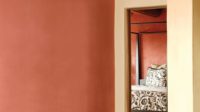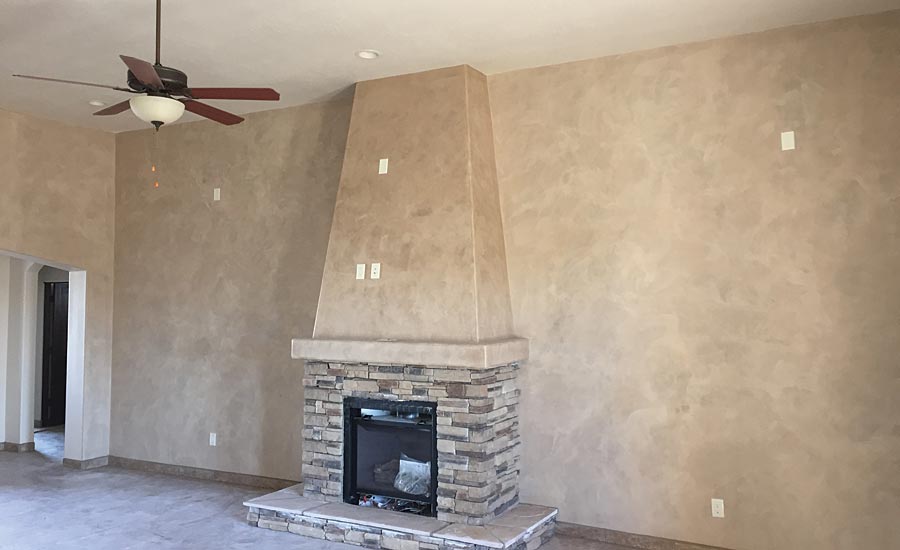Decorative Plaster and Faux Finishing: A Market Study
HOW THE EVOLUTION OF DECORATIVE PLASTER AND FAUX FINISHING HAS MADE THE FUTURE OF THESE TWO CRAFTS OPPORTUNITY FILLED.












Decorative plaster and faux finishing embody a tremendously wide range of products and application techniques for decorating wall and ceiling surfaces. Worldwide, these two crafts are gaining in popularity with impressive growth statistics.
Faux finishing is generally regarded as a sector of the paint industry and accounts for more than 10 percent of the decorative coatings market. In the U.S., growth is mostly attributed to new and innovative products, however a significant increase in wall covering sales is impeding the faux market growth.
Decorative plasters are sometimes considered faux coatings, but in the U.S. there is definite separation of the plaster and faux trades. Residential construction is the primary market for faux finishing, while decorative plasters enjoy their greatest strength in commercial construction.
Decorative Plaster Market
The strong decorative plaster market in the U.S. can largely be attributed to Hopper Finishes developed in Phoenix, Ariz., beginning in 1934. By bringing European products and technology to the U.S., they developed a thriving business that became the foundation for what we now often refer to as “Venetian Plaster” today.
There are four basic compositions of decorative plaster on the market today:
Lime Plasters: most common form of Venetian or Old World plaster. There are many brands and formulations which can achieve endless textures. Polished plaster has been the primary application but is giving way to more subtle looks, lighter colors and less movement.
Cement Plasters: blended with limestone, various aggregates and polymer additives can also achieve a wide variety of textures from smooth to pitted and often to replicate concrete.
Acrylic Finishes: born from EIFS finishes, can also come in various textures and are typically very durable and moisture resistant.
Clay Plaster: natural earthen based, environmentally friendly finish, also available in a variety of textures.
Accessories: most brands of decorative plaster have accompanying products such as metallic glazes, protective and aesthetic sealers.
Country Plaster?
As stated above, commercial construction is currently overall the largest market for decorative plasters but that is not to discount the market residential has for it, especially high end. In California, Rams Stadium has thousands of square feet of lime plaster being installed by the Nevell Group. It is important to note the finishes on this project are U.S. manufactured, and there are now at least four lime plasters being produced right here in the U.S. There are significant other large projects with decorative plaster on the west coast, most being installed by members of the WWCCA.
While there are many projects using decorative plaster, it is interesting to observe that not many come by way of the open bid market. ConstructConnect’s Project Intelligence is a great resource that can be used to determine what products are being specified in U.S. markets. Recently, I searched for decorative plaster, and the search listed approximately 50 projects with decorative plaster somewhere in the project’s specifications. Expecting and hoping to find specifications with lime, cement, acrylic or clay plaster, I found nothing within the projects populating the search. I should have known something was awry in that most of the projects were renovation or restoration related, and virtually all specified something to the effect of, “When repairing the plaster walls, carefully and accurately repair the decorative ornamental plaster coping.”
Industry Insights
The Director of Specialty Finishes at KHS&S Contractors, Kevin Wirsch, notes that the majority of the projects KHS&S acquires that have decorative finishes are negotiated during the design stage and/or with GC’s and owners they have close relationships with. Through conversation with several other prominent contractors in different markets, I’ve found that this paradigm is not uncommon. Wirsch is optimistic about the future after COVID-19. Though amusement park construction (which typically is a staple of KHS&S business) has all but halted, Wirsch feels it is bound to rebound after the pandemic.
Billy Boselli, general manager for Saguaro Drywall, has discovered a unique market for decorative finishes in Phoenix. Large and older high-end homes being sold, generally to wealthy clients which have existing decorative finishes, are often candidates for re-finishing at lucrative numbers. This opportunity is available in many other markets.
Opportunity for Faux Finishing & Plaster
Another key market finding applies to both faux finishing and decorative plaster. The upper and mid-level residential, remodel and new construction markets provide great opportunity for both manufacturers and quality applicators of faux and plaster products. Historically, this has been faux finishing’s stronghold and it has developed for decorative plaster as well. The other day I was talking with a partner of a two-man decorative plaster contractor and I asked him how he kept so busy. He immediately replied, “We just answer the phone for the next referral nearly every day.”
Innovation has made the future for decorative plaster and faux finishing very bright. There are three primary advancements used today or are on the horizon, that are somewhat common to both faux finishing and decorative plaster.
The first being that performance and quality improvements to paint coatings and plasters are happening rapidly. Michael Lewis, well-known faux and plaster contractor in the California deserts, talks of the development of high-quality decorative paints increasing the faux range of applications, especially in the high-end residential market. Decorative plasters have had performance enhancements incorporated in their formulas, especially for durability.
The second being that application techniques and equipment improvements have improved production rates resulting in labor savings. Spraying paints and even plasters is becoming standard practice. Last but not least, antimicrobial technology, the use of a substance that works to destroy or prevent the growth and reproduction of bacteria, mold and mildew, is soon to be incorporated into products within these two industries. Like with all good things, it will take time to see results. Especially on such a wide range of products. But rest assured, it is happening.
Looking for a reprint of this article?
From high-res PDFs to custom plaques, order your copy today!













